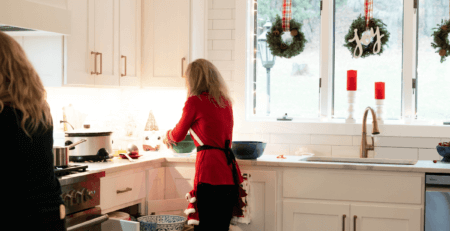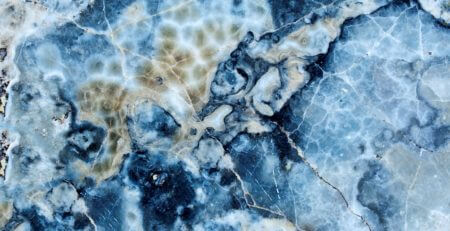Why Stone Works Best for Monochrome Kitchen Schemes
There is a reason that the trend for monochrome kitchens has held up in popularity. It’s modern and clean and the ultimate in flexibility. The concept can emit timeless elegance or funky contemporary style. It may all seem simple – it’s just black and white after all. However, this scheme comes with its own potential pitfalls, many of which come down to material choice and finding the right balance of tones. So why is stone so popular for monochrome schemes, and how do you get it right?
Balance of Shades
Try not to equally balance your black and white tones. This creates too much contrast and makes the space appear cluttered. Your dominant shade will often be reflected in your choice of stone worktop. Marble countertops provide a beautifully elegant white, with or without the trademark graining that different variations offer. Or for a more textured appearance of the surface, granite offers a wealth of both light and dark options.
Use of Light
The amount of natural light from which your kitchen benefits will have a bearing over which stone works best for your monochrome scheme. As horizontal surfaces such as worktops catch the light easily, you can target these for your lighter tones. So if natural light in your kitchen is limited then look at a predominantly white scheme using sparkling quartz. A dark focussed scheme can work for kitchens that are abundant in natural light but it’s a bold look. To avoid flatness in the design choose a textured work surface such as granite.
Coloured Accessories
Make the most of your stone worktop by considering what you place on them. Countertop accessories can provide a splash of colour to beautifully set off a monochrome kitchen. Vibrant red works for a modern scheme, and emerald green for a more classic look. Set off your kitchen island or breakfast bar with coloured pendant lights.
Ongoing Appeal
The great thing about focussing a monochrome kitchen with stone work surfaces is that the materials are durable and hygienic. Sealed marble and granite are heat and water resistant, while quartz is almost entirely non-porous. In this way, the vibrancy of the tone (whether light or dark) is maintained through the years so your concept does not lose its edge.
Mix Patterns
While a monochrome design thrives on simplicity, it is important to include some pattern and texture. If your cabinets are glossy, contrast with a detailed granite worktop. Or use patterned wall tiles to set off a flawless marble worktop. Darker greys and blacks that are provided by granite worktops can add light reflecting sheen and sparkle to brighten up the darker elements of your monochrome.
Design Contrasts
If you’ve plumped for white as your predominant monochrome tone, ensure that you do not set different whites against each other. Shades of white that appear the same when seen separately can actually be different when set alongside each other. If your marble or quartz worktop is white, therefore, go for a contrasting cabinet front. Both polished and satin stone finishes bring a very modern texture that works ideally with the contemporary cabinet fronts preferred in a monochrome scheme.
A Touch of Warmth
Too much starkness can make a monochrome concept feel clinical. This is especially so when using stone as the line of this material are so clean. Walnut or oak flooring can bring a depth of warmth to a monochrome kitchen. The scope to use wood as a contrast to stone worktops is a great benefit of choosing stone as a worktop material.
By choosing a Zen Stone worktop with the right texture and hue for your kitchen space, your monochrome kitchen will be striking and enduring. As stone is such a durable material, this timeless style is a great thing!












